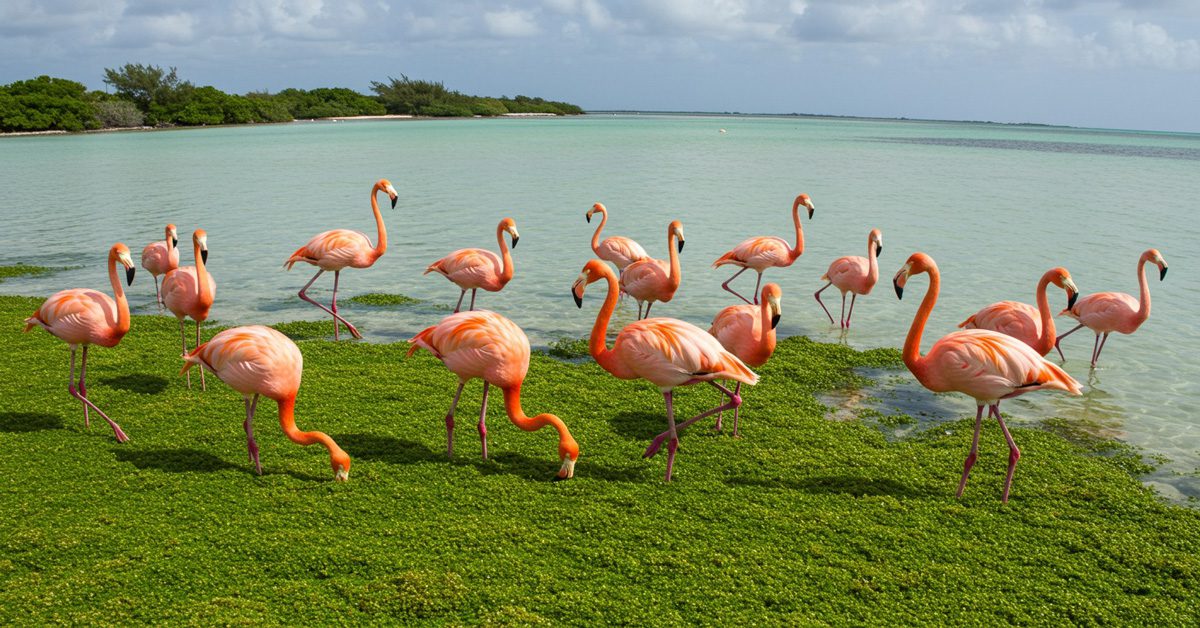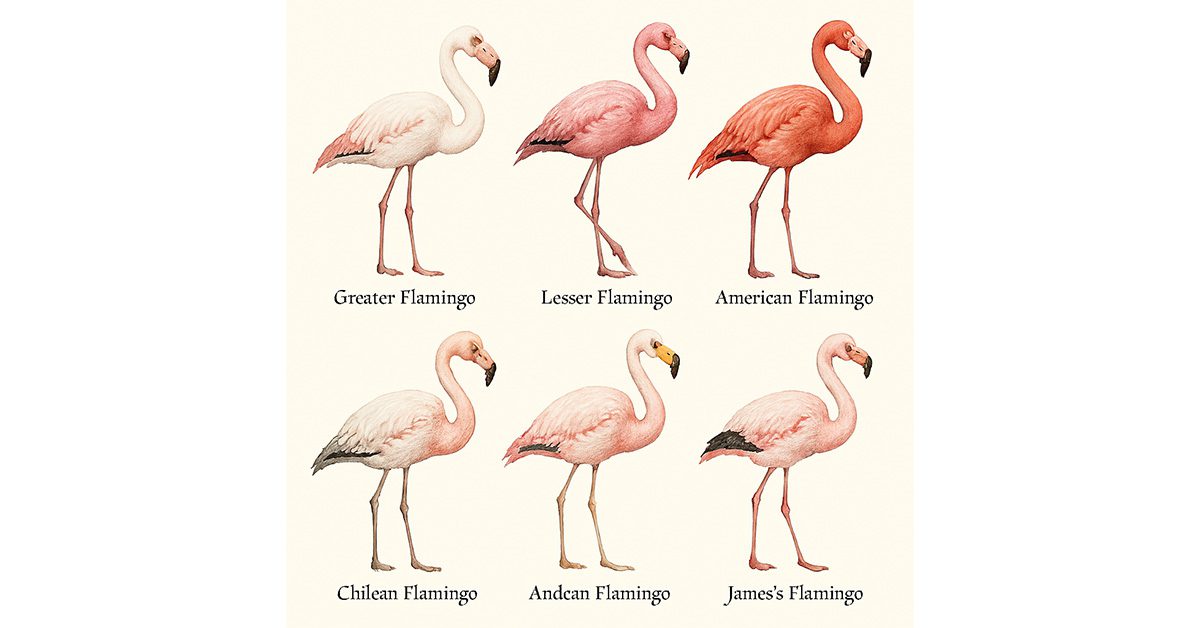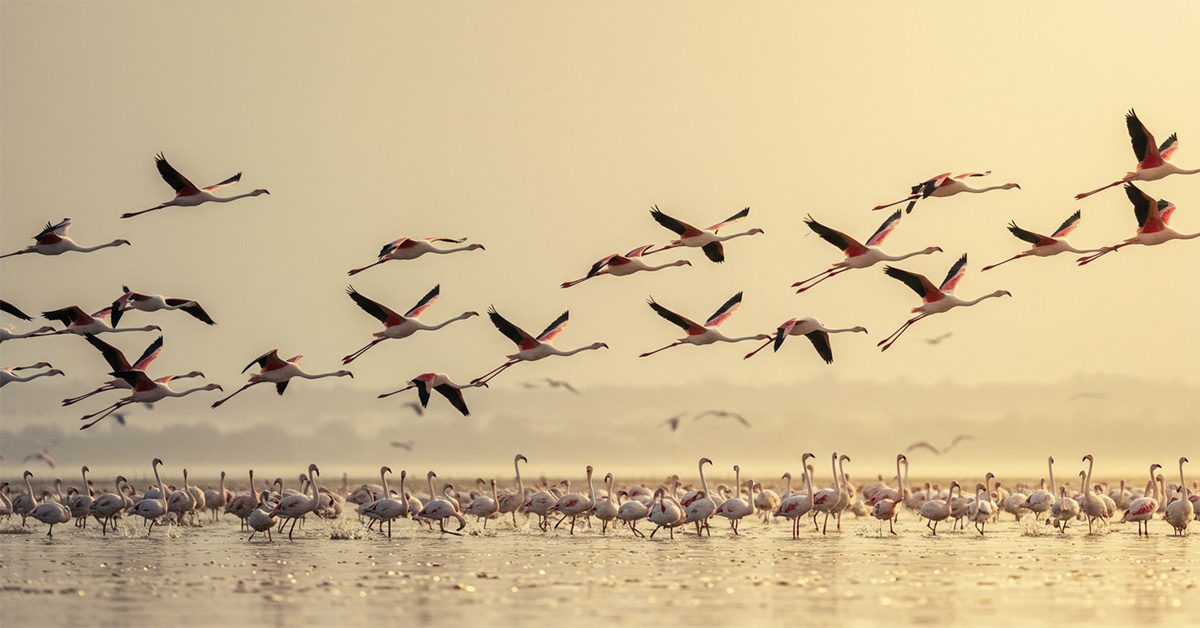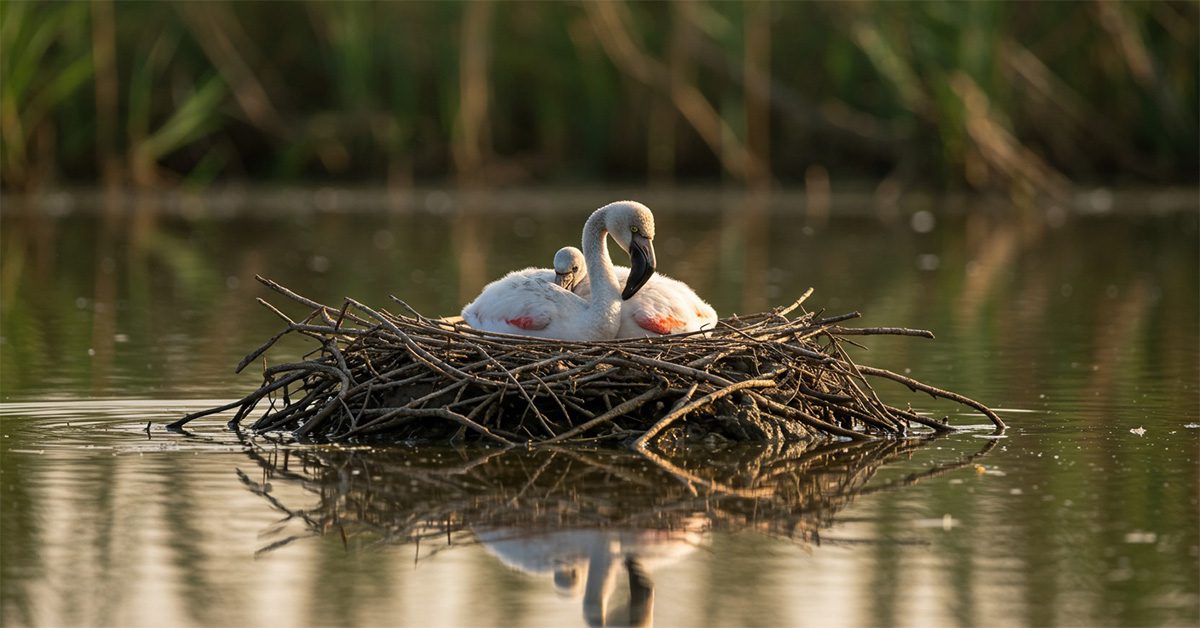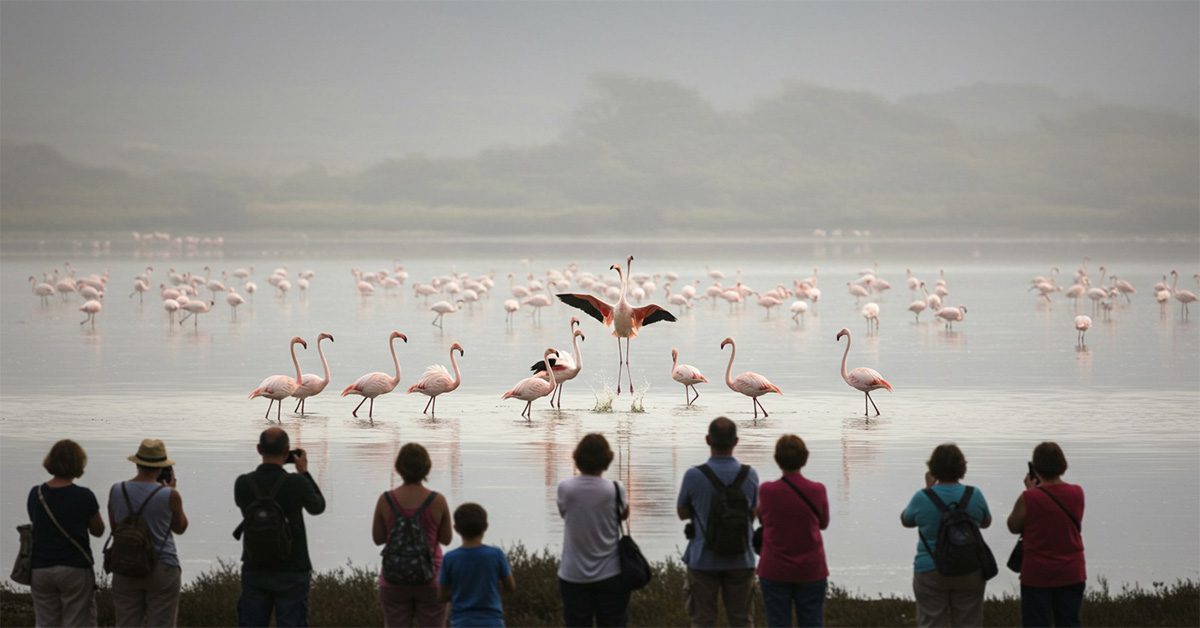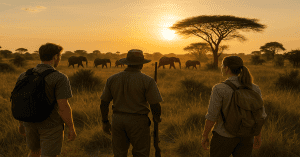When and Where to See Flamingos
Flamingos are among the most fascinating and photogenic birds on Earth. With their long legs, S-shaped necks, and iconic pink plumage, they have captured the imagination of travellers, photographers, and wildlife enthusiasts worldwide. But beyond their beauty lies an equally interesting lifestyle, shaped by migration, diet, and unique social behaviour. People often plan entire trips just to catch a glimpse of massive flocks of flamingos moving across shimmering lakes and salt flats, creating a picture that looks straight out of a painting.
There are six recognised species of flamingos, each adapted to unique wetland habitats across five continents:
|
Species |
Regions Found |
|
Greater Flamingo (Phoenicopterus roseus) |
Widely distributed across Africa, southern Europe, the Middle East, and parts of South Asia. |
|
Lesser Flamingo (Phoeniconaias minor) |
Concentrated in sub-Saharan Africa and northwest India, especially around alkaline lakes. |
|
American/Caribbean Flamingo (Phoenicopterus ruber) |
Found in the Caribbean, northern South America, Yucatán Peninsula, and Galápagos Islands. |
|
Chilean Flamingo (Phoenicopterus chilensis) |
Native to South America—from Ecuador and Peru down to Argentina and southern Brazil. |
|
Andean Flamingo (Phoenicoparrus andinus) |
Inhabits high-altitude salt lakes in Peru, Bolivia, Chile, and Argentina. |
|
James’s Flamingo (Phoenicoparrus jamesi) |
Restricted to the Andean plateaus of southern Peru, western Bolivia, and northern Chile. |
These species thrive in environments ranging from tropical lagoons to frigid mountain lakes, showcasing remarkable adaptability. Their presence often signals healthy wetland ecosystems, making them not just beautiful but ecologically vital.
One of the most surprising things about flamingos is that their pink color doesn’t come naturally—it’s a result of their diet. They feed primarily on algae, plankton, and brine shrimp, all of which contain carotenoids, the same pigments that give carrots their orange colour. The more they consume, the brighter their feathers appear, which is why flamingos in different regions may vary slightly in color from pale pink to vibrant crimson.
Travellers are drawn to flamingos not just for their beauty but also for their behaviour. They’re highly social creatures, often living in colonies numbering in the tens of thousands. Watching them interact—whether performing synchronized mating dances, feeding in unison, or flying together in formation—offers a breathtaking reminder of nature’s harmony. For wildlife watchers, knowing when and where to see flamingos can make all the difference between a fleeting glimpse and a once-in-a-lifetime spectacle.
Understanding Flamingo Migration Patterns
Flamingos are migratory birds, and their movements depend largely on the availability of water and food. Unlike some birds that follow strict north-south migration routes, flamingos adapt to seasonal conditions. For example, when water levels drop in a lake, they move on to another wetland where food is more abundant. This makes them highly nomadic and sometimes unpredictable, but it also means they can be spotted in many parts of the world.
In Africa, millions of lesser flamingos migrate between the soda lakes of Kenya and Tanzania, creating some of the most dramatic wildlife spectacles on the continent. Similarly, in South America, Andean and Chilean flamingos migrate between high-altitude salt flats and lower wetlands. Migration is not only about food—it also plays a crucial role in breeding, as flamingos often move in search of safe nesting grounds away from predators.
For birdwatchers, understanding these patterns is essential. It’s not enough to visit a famous flamingo lake; timing matters just as much. Some lakes may be completely deserted at one time of year, while at another, they’re filled with thousands of flamingos. This unpredictability makes flamingo watching both exciting and challenging.
Best Times of the Year to See Flamingos
When it comes to flamingo watching, timing is everything. The best times of year vary depending on the region, but in general, the winter and spring months are most rewarding. In Africa, the peak flamingo season usually falls between December and March, when the soda lakes are filled with nutrient-rich water that attracts millions of birds. In India, the famous Rann of Kutch sees its flamingo population swell between November and February, drawing travelers from around the globe.
Breeding season is another fantastic time to witness flamingos. During this period, which usually occurs after the rainy season, flamingos gather in large numbers on mudflats and salt pans to build cone-shaped nests out of clay and mud. It’s also when their synchronized courtship displays take place—a mesmerizing dance where thousands of birds march together, turning their heads in unison as if choreographed.
Weather also plays a role. Flamingos prefer shallow, calm waters where they can easily feed. Heavy rains can disperse them, while extreme drought can force them to relocate. This means travelers should always check local conditions before planning their trips. The best advice is to aim for transitional seasons—right after rains when the lakes are full but not overflowing.
Where to See Flamingos Around the World
Flamingos are found on nearly every continent, with each region offering unique opportunities to see them in their natural habitats.
Each destination offers a different experience, from massive colonies in Africa to serene flocks in Europe’s salt pans.
Top Flamingo-Watching Destinations in Detail
The Flamingo Breeding Season
Flamingo breeding season is one of the most remarkable events in the birding world. Unlike many birds that nest in trees or bushes, flamingos build their nests in the open, often on vast mudflats or the shores of shallow lakes. Their nests are cone-shaped mounds of mud, about a foot high, designed to protect their single egg from flooding and overheating. Seeing an entire colony of flamingos engaged in this process is nothing short of awe-inspiring—it’s like watching nature’s orchestra at play.
The timing of the breeding season varies depending on the region. In East Africa, for example, lesser flamingos gather around Lake Natron in Tanzania between October and January. The highly alkaline lake might seem inhospitable to us, but for flamingos, it provides a safe haven free from most predators. In India’s Rann of Kutch, breeding usually occurs between December and February, following the monsoon rains that fill the salt marshes. South America’s flamingos, especially those in Bolivia and Chile, breed during the summer months, taking advantage of high-altitude wetlands.
What makes this season especially captivating is the courtship display. Thousands of flamingos participate in synchronized “dances” where they march together, stretch their necks, and turn their heads in unison. This spectacle is not just for show—it’s a way for the flock to synchronize breeding, ensuring chicks hatch around the same time, which improves their chances of survival. The visual impact of these dances, with thousands of birds moving as if choreographed, is unforgettable.
During breeding, each pair usually lays just one egg. Both parents take turns incubating it for about a month. Once the chick hatches, it has gray or white down and a straight beak that only curves as it matures. Flamingo chicks gather in crèches—nursery groups—where thousands of young birds stay together while adults go off to feed. Parents then locate their own chick through vocal recognition, which is an incredible feat considering the sheer number of young in the colony.
For birdwatchers and wildlife enthusiasts, visiting during breeding season is the ultimate reward. Not only can you see vast colonies of adult flamingos, but you may also witness nesting, hatching, and the playful antics of flamingo chicks. It’s a reminder of how fragile and resilient these birds are, depending so much on seasonal water patterns yet thriving in some of the harshest landscapes on earth.
Best Times of the Day to See Flamingos
If you want the best possible flamingo-watching experience, the time of day matters just as much as the season. Generally, early mornings and late evenings are the prime hours. At dawn, the light is soft, the water is calm, and flamingos are most active in their feeding. The rising sun casts golden hues over the landscape, making its pink plumage glow even more vibrantly. Photographers especially favour this time, as the reflections in the water create stunning compositions.
Late evenings, just before sunset, offer another magical moment. Flamingos often gather in large groups during this time, either preparing to roost or flying together across the horizon. Watching hundreds of flamingos take flight against a fiery sunset is a memory that stays with you forever. Midday, on the other hand, can be harsh, with heat haze and bright light washing out their colors. Flamingos also tend to rest more during the hottest part of the day, so activity levels are lower.
For photographers, golden hours—the hour after sunrise and the hour before sunset—are unbeatable. These are the times when you can capture the iconic silhouette shots of flamingos standing on one leg, with rippling reflections in still waters. If you’re lucky, you might also catch glimpses of courtship dances or chicks feeding.
Another factor to consider is the tide (for coastal locations). In places like Mexico’s Celestún Reserve, flamingos are most visible during low tide when they wade into shallow lagoons to feed. During high tide, they often move to less accessible areas. Similarly, in salt flats and wetlands, calm water after rains can increase sightings, while windier conditions may scatter the flocks.
So, if you’re planning your trip, aim for early morning excursions and late-afternoon tours. Not only will you maximize your chances of seeing large, active flocks, but you’ll also experience the most breathtaking lighting conditions for both observation and photography.
Tips for Flamingo Watching
Flamingo watching is more than just showing up at a lake or wetland—it’s an experience that requires a bit of planning to make it truly memorable. First and foremost, bring the right equipment. A good pair of binoculars is essential because flamingos often feed far out in the water, and their details—like their unique beak shapes and color variations—are best appreciated up close. If you’re serious about photography, a telephoto lens (200mm or longer) will let you capture intimate shots without disturbing the birds.
Clothing is another consideration. Wear neutral colors that blend into the environment so you don’t startle the birds. Comfortable shoes, sun protection, and insect repellent are must-haves, especially if you’re visiting wetlands or salt flats where conditions can be harsh. In high-altitude locations like Bolivia’s salt flats, be prepared for sudden changes in weather, from blazing sun to chilly winds.
When it comes to observing flamingos, patience is key. They may seem to stand still for long stretches, but if you watch closely, you’ll notice fascinating behaviors—feeding, socializing, or even beginning their famous dances. Guides often recommend sitting quietly at a distance and letting the birds come closer rather than approaching them, which can cause stress.
Photography tips include shooting from low angles to capture reflections, using burst mode during group movements, and focusing on contrasts between their pink feathers and the surrounding landscapes. Early mornings often provide misty backdrops, while evenings give you warm, golden tones.
Finally, always practice ethical wildlife watching. Keep a respectful distance, avoid making loud noises, and never attempt to feed flamingos. Human interference can disrupt their natural feeding and breeding behaviors. Responsible tourism ensures that these incredible birds continue to thrive and be enjoyed by future generations.
Flamingos in Culture and Symbolism
Flamingos have long fascinated humans, not only for their striking pink color but also for the meanings people attach to them. Across different cultures, these elegant birds are symbols of grace, beauty, balance, and transformation. Their ability to thrive in harsh, salty, and alkaline environments has also made them a symbol of resilience and adaptability.
In ancient Egypt, flamingos were associated with the sun god Ra because of their fiery, reddish appearance. Ra was one of the most powerful deities in ancient Egyptian mythology, often depicted with a falcon head crowned by a solar disc. He represented creation, light, and the daily rebirth of the sun. His journey across the sky in the solar barque and descent into the underworld each night symbolized the eternal cycle of life and death.
In some Native American traditions, they represent cooperation and community, reflecting their highly social nature.
In modern symbolism, flamingos often embody fun, exotic beauty, and positivity—just think of how often they appear in tropical-themed decorations, fashion, and even as inflatable pool floats. Their upright stance on one leg has also come to symbolize balance, patience, and calmness.
Beyond symbolism, flamingos play a role in local folklore wherever they are found. In the Caribbean, they are sometimes referred to as “flame birds,” admired for their vibrant presence against the blue-green waters. In India, they are celebrated in festivals during their migratory season, drawing not only bird lovers but also locals who see their arrival as a sign of seasonal change. In Spain and France, where flamingos are permanent residents, they have been woven into cultural identity, often linked to traditional music, dance, and art.
In contemporary culture, flamingos have become icons of leisure and extravagance, often associated with summer vibes and luxury. They are popular motifs in home décor, fashion accessories, and lifestyle branding. But beyond the aesthetics, the symbolism of flamingos runs deeper—they remind us of the importance of community, the beauty of uniqueness, and the need to stay grounded even when life’s waters get turbulent.
Conservation of Flamingo Habitats
As enchanting as flamingos are, their survival is far from guaranteed. These birds depend on very specific ecosystems—salt lakes, wetlands, lagoons, and mudflats—that are increasingly under threat. Habitat destruction, climate change, pollution, and unregulated tourism pose significant risks to flamingo populations worldwide. For example, water diversion projects that dry up lakes can eliminate feeding and breeding grounds, forcing flocks to move elsewhere or preventing successful nesting.
One of the greatest dangers comes from human encroachment. As wetlands are drained for agriculture or development, flamingos lose critical habitats. Pollution also plays a role; toxic chemicals in water can affect both the algae they feed on and the health of the birds themselves. Climate change adds another layer of uncertainty—rising temperatures and erratic rainfall patterns disrupt the delicate balance of saline and alkaline lakes where flamingos thrive.
Fortunately, conservation efforts are underway in many regions. Protected areas like Kenya’s Lake Nakuru National Park, Mexico’s Celestún Biosphere Reserve, and Spain’s Doñana National Park are managed specifically to safeguard flamingo habitats. International organizations, such as BirdLife International, work with governments to monitor populations and protect migratory routes. Community-based ecotourism projects also play a crucial role, encouraging locals to see flamingos not as nuisances but as valuable assets that attract travelers and generate sustainable income.
As travelers, we have a role to play, too. Choosing responsible tour operators, avoiding disruptive behavior, and supporting conservation-focused initiatives can make a real difference. Flamingos are more than just beautiful birds—they’re indicators of the health of entire ecosystems. Protecting them ensures that the wetlands, salt flats, and lagoons they call home continue to support not just flamingos but countless other species.
Planning Your Flamingo-Watching Trip
Seeing flamingos in the wild can be a life-changing experience, but planning the trip carefully ensures you get the most out of it. First, consider your budget. For travelers seeking affordable options, destinations like India’s Rann of Kutch or Spain’s wetlands are excellent because they’re relatively inexpensive and accessible. Budget travelers can also look into group tours, which reduce costs and provide expert guides who know the best spots.
For those wanting a more luxurious experience, safaris in Kenya and Tanzania often combine flamingo watching with sightings of other wildlife, such as lions, elephants, and giraffes. High-end lodges along the lakes offer comfortable accommodations with breathtaking views. In South America, luxury eco-lodges near Bolivia’s salt flats or Chile’s Atacama Desert provide unique experiences like stargazing and guided tours of high-altitude lagoons.
Family-friendly flamingo watching is also popular, especially in places like Florida, Mexico, and southern Europe, where access is easier and tours are well-structured. Many reserves offer boat trips, boardwalks, and guided walks suitable for children. For photographers and birdwatchers, specialist tours are available that focus entirely on flamingos, ensuring you visit at peak times for both viewing and photography.
When planning, don’t forget practical considerations like weather conditions, travel permits, and health precautions. Some flamingo habitats, such as Lake Natron in Tanzania or Bolivia’s high-altitude salt flats, are remote and challenging to reach, requiring physical preparation and reliable transport. In contrast, places like Spain’s Doñana or France’s Camargue are easily accessible by car and offer comfortable facilities nearby.
No matter your budget or travel style, there’s a flamingo destination for you. The key is aligning your expectations—whether you want to see massive flocks numbering in the millions or prefer a quieter, more intimate experience with smaller colonies.
Flamingo Festivals Around the World
In some parts of the world, flamingos are celebrated not just as wildlife but as cultural icons, with entire festivals dedicated to their arrival. These events combine birdwatching with music, food, and local traditions, creating a vibrant atmosphere that appeals to both locals and tourists.
In India, the Rann of Kutch Flamingo Festival is one of the most famous. Held during the winter migration season, it features cultural performances, handicraft exhibitions, and guided flamingo-watching tours. The festival is as much about showcasing local heritage as it is about celebrating the birds themselves.
In Africa, regions like Kenya and Tanzania occasionally host community-based events around flamingo migration peaks, promoting conservation awareness and sustainable tourism. Visitors get the chance to learn from local guides, witness cultural dances, and of course, admire the sight of lakes turned pink by millions of birds.
The Caribbean also embraces flamingos as symbols of tropical identity. Islands like Bonaire and the Bahamas highlight flamingos in eco-tourism events, where guided tours are paired with local festivities. In Europe, particularly in France’s Camargue region, festivals and fairs often feature flamingos as emblems of regional pride, alongside traditional horse shows and folk music.
Attending a flamingo festival is more than just watching birds—it’s an immersive experience where culture, nature, and celebration come together. It’s the perfect way to appreciate the significance of flamingos, not only as part of the ecosystem but also as inspirations for human creativity and joy.
Safety and Precautions While Watching Flamingos
Flamingo watching is generally safe, but because these birds live in unique and sometimes extreme environments, it’s important to take a few precautions to make your trip enjoyable and secure. Many of the world’s flamingo habitats are located in salt flats, alkaline lakes, or wetlands that can be harsh on both humans and equipment. For example, the soda lakes in Kenya and Tanzania have highly caustic waters that can irritate skin if touched. Similarly, Bolivia’s high-altitude lagoons can expose travelers to strong UV rays, thin air, and sudden drops in temperature.
One of the first things to keep in mind is environmental preparation. If you’re visiting tropical regions like Mexico or the Caribbean, pack light, breathable clothing, insect repellent, and plenty of water. In contrast, if your destination is a high-altitude location like the Andes, bring warm layers, sunscreen, and take time to acclimatize to avoid altitude sickness. Good footwear is a must everywhere—expect muddy flats, rocky terrain, or slippery paths.
When it comes to wildlife safety, the most important rule is respect. Flamingos are sensitive birds, and sudden movements, loud noises, or attempts to approach them too closely can cause entire flocks to take flight. Not only does this stress the birds, but it also deprives you of the chance to watch them engage in natural behaviors like feeding or dancing. Always maintain a safe distance and use binoculars or zoom lenses instead of trying to get physically closer.
Water and weather safety are also crucial. Wetlands can be unpredictable, with sudden flooding or soft ground that makes walking hazardous. If you’re exploring by boat, always wear life jackets and stick with licensed guides who know the waterways well. In desert regions, dehydration is a serious risk, so carry extra water, hats, and sunglasses.
Lastly, protect your gear. Salt and alkaline dust can damage cameras, phones, and binoculars. Bringing protective covers or keeping equipment in sealed bags when not in use can save you from expensive repairs later. With the right preparation and respect for nature, flamingo watching becomes a safe, enriching experience that connects you with one of the most beautiful birds in the world.
Frequently Asked Questions About Flamingos
1. Do flamingos really stand on one leg?
Yes! One of the most iconic sights in flamingo behavior is their habit of standing on a single leg. Scientists believe this helps them conserve body heat by reducing heat loss through their legs while wading in water. Others suggest it may be a way to relax their muscles, since their anatomy allows them to lock one leg in place with very little effort.
2. Why are flamingos pink?
Flamingos are not born pink—they hatch with gray or white feathers. Their famous pink coloration comes from their diet, which is rich in carotenoids found in algae, plankton, and brine shrimp. The more carotenoid-rich food they consume, the brighter and deeper their color becomes. This is why flamingos in some regions appear more vibrant than others.
3. Can flamingos fly long distances?
Absolutely. Despite their awkward appearance on land, flamingos are strong fliers. They can reach speeds of up to 60 kilometers (37 miles) per hour and travel hundreds of kilometers in a single journey. This ability is crucial during migration, when they move between breeding and feeding grounds.
4. How long do flamingos live?
In the wild, flamingos typically live 20 to 30 years, though some individuals in captivity have been known to reach over 50 years. Their longevity depends on factors such as habitat quality, predation, and human activity.
5. Where is the best place in the world to see flamingos?
The answer depends on what you’re looking for. If you want to see massive colonies, East Africa’s soda lakes (like Nakuru, Bogoria, and Natron) are unbeatable. For unique landscapes, Bolivia’s Salar de Uyuni offers a surreal backdrop. For accessible, family-friendly options, Spain’s Doñana National Park and France’s Camargue are excellent. Each destination provides a different but equally unforgettable experience.
Final Word
Flamingos are more than just pink birds—they are symbols of resilience, beauty, and community, thriving in some of the world’s harshest environments. Knowing when and where to see them can transform an ordinary trip into an extraordinary adventure. From the soda lakes of Africa to the salt flats of South America, from India’s Rann of Kutch to the wetlands of Europe, every flamingo-watching destination offers its own magic.
Whether you’re drawn by their synchronized dances, their breathtaking colonies, or simply their elegance as they wade through shimmering waters, flamingos never disappoint. Planning your trip carefully—choosing the right season, time of day, and ethical practices—ensures that your encounter is not only memorable but also sustainable.
As you watch these birds turn entire landscapes pink, you realize that seeing flamingos in the wild is about more than birdwatching. It’s about appreciating the delicate balance of ecosystems, the wonder of migration, and the joy of connecting with nature’s artistry.

